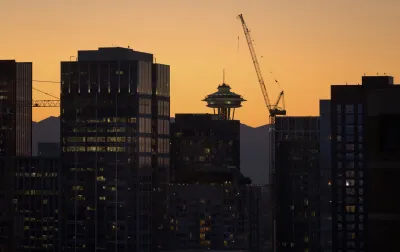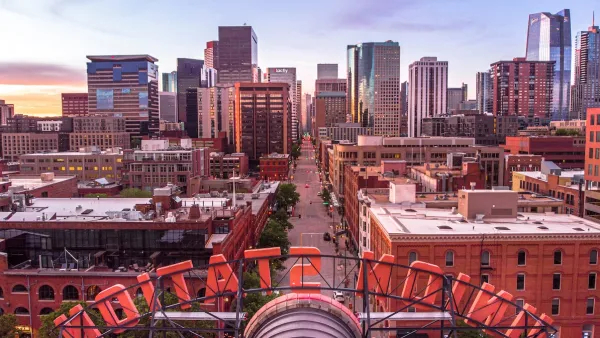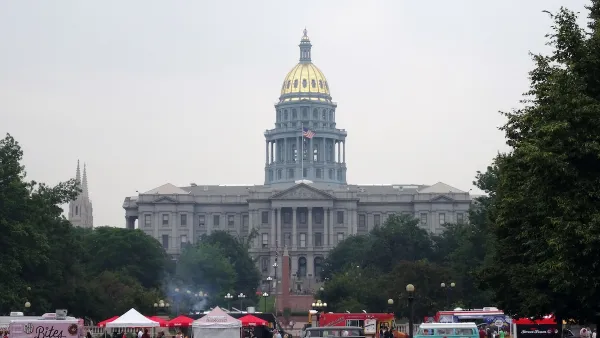A Washington Post feature analyzes the changing skylines of cities from the Rocky Mountains to the Pacific Ocean.

Scott Wilson provides the copy and Aaron Steckelberg provides the infographics in a must-read feature planners and urbanists all around the country, but especially in the Western United Stats.
"From the Rockies to the Pacific, cities are seeking to accommodate increasing populations amid housing shortages by growing up instead of out," writes Wilson. "A number of them, including this mile-high city hard against the Front Range, are considering projects that would construct some of the tallest buildings in the West."
According to Wilson, the recent development of taller, centrally located buildings reverses course for these cities, which have sprawled outward, rather than reaching upward, for decades.
"The towers are the showpieces, but across these urban centers, which have sprawled into suburbs for years, new housing and office projects also are being built taller than ever before. The construction is focused around public transportation centers, and, in some cases, cities are allowing heights to rise beyond original zoning rules as a reward for builders who contribute more to affordable housing."
It's a familiar narrative for Planetizen readers—the "return to the city" movement driving the revitalization and redevelopment of once-abandoned urban cores around the country. The new trick with this article is found in the graphics that showcase the buildings redefining height in the cities like Denver (the planned tallest building, 650 17th Street would reach 1,000 feet, far above the current tallest building, Republic Plaza, which reaches 714 feet). Graphics for Seattle, Long Beach, and Sacramento, along with passages of analysis into the land use and zoning changes driving new building heights, are also included in the article.
FULL STORY: The rising Western skyline

Analysis: Cybertruck Fatality Rate Far Exceeds That of Ford Pinto
The Tesla Cybertruck was recalled seven times last year.

National Parks Layoffs Will Cause Communities to Lose Billions
Thousands of essential park workers were laid off this week, just before the busy spring break season.

Retro-silient?: America’s First “Eco-burb,” The Woodlands Turns 50
A master-planned community north of Houston offers lessons on green infrastructure and resilient design, but falls short of its founder’s lofty affordability and walkability goals.

Test News Post 1
This is a summary

Analysis: Cybertruck Fatality Rate Far Exceeds That of Ford Pinto
The Tesla Cybertruck was recalled seven times last year.

Test News Headline 46
Test for the image on the front page.
Urban Design for Planners 1: Software Tools
This six-course series explores essential urban design concepts using open source software and equips planners with the tools they need to participate fully in the urban design process.
Planning for Universal Design
Learn the tools for implementing Universal Design in planning regulations.
EMC Planning Group, Inc.
Planetizen
Planetizen
Mpact (formerly Rail~Volution)
Great Falls Development Authority, Inc.
HUDs Office of Policy Development and Research
NYU Wagner Graduate School of Public Service



























